Please login or click here to join.
Forgot Password? Click Here to reset pasword
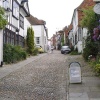 | 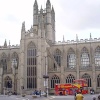 | 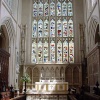 |  | 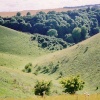 | 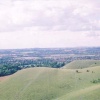 |
| Pete Rowley Posts: 16 Joined: 14th Apr 2008 Location: UK | quotePosted at 15:25 on 26th October 2008 Hi all. Can anyone tell me how to use a hand held light meter. I was give one by my father many years ago and have never used it. I have a Canon ES3000 with all sorts of settings, but I always use it in auto mode. |
| Paul Hilton Posts: 2605 Joined: 21st Nov 2004 Location: UK | quotePosted at 15:43 on 26th October 2008 Very briefly Pete in simplistic terms-----set the light meter to the ASA/ISO that is on the camera's setting. Pointing the light meter towards the subject will cause it's needle to indicate an exposure value number. This number should then be able to be set on the light metre so the relevant F-stops/ shutter speeds are set against each other, for whatever combination from these you choose; it's still letting the same amount of light in/exposure, for an indicated exposure value. Essentially, it's a circular slide rule. Then, set the camera to the combination you want to use. Like your camera's exposure meter, it will be looking at a scene as though it's 18% gray, so allowances may well be needed to correct for lighting/subjects that don't really follow this averaging i.e. snow. Edited by: Paul Hilton at:26th October 2008 15:49 |
| Ray Stear Posts: 1930 Joined: 25th Apr 2008 Location: UK | quotePosted at 16:00 on 26th October 2008 Hi Paul,Spot on as usual. I also find the incidental light readings useful, if it has a suitable mask for the input of the photometer, perhaps you can explain that to Peter? |
| Pete Rowley Posts: 16 Joined: 14th Apr 2008 Location: UK | quotePosted at 17:16 on 26th October 2008 Thanks guys, I'll have a go and see how I get on. |
| Ray Stear Posts: 1930 Joined: 25th Apr 2008 Location: UK | quotePosted at 18:00 on 26th October 2008 Hi Pete, When Paul comes back he will give a proper explanation, but basically, the incidental light measurement is the reading FROM the subject. I.e. If you measure amount of light actually falling on the face of a person for example. It can be useful to render natural skin tones, and other features you want a really accurate reading from. You fit the filter over the lightmeter and place it near the subject pointing towards the camera, then measure the reading and adjust accordingly. Ray |
| Paul Hilton Posts: 2605 Joined: 21st Nov 2004 Location: UK | quotePosted at 19:27 on 26th October 2008 Hi Ray---thanks for brinig up the incident light reading; I'd just posted the above as I was leaving for work. As Ray mentioned Pete----incident light readings are measuring the light falling on the subject rather than, as above and your camera does, measuring light being reflected by it. If your light meter came with a (often) round/conical transluscent cover to fit over the sensor, then incident light readings will be an option too. But, in this case, it's going to the subject's location---not always practicable---and pointing the light meter towards the camera's position. Useful also in situations where the image to be taken isn't really like to the average 18% , and could be more useful to get a more accurate reading. i.e. a high contrast situation. |
| Please login to post to this thread... |